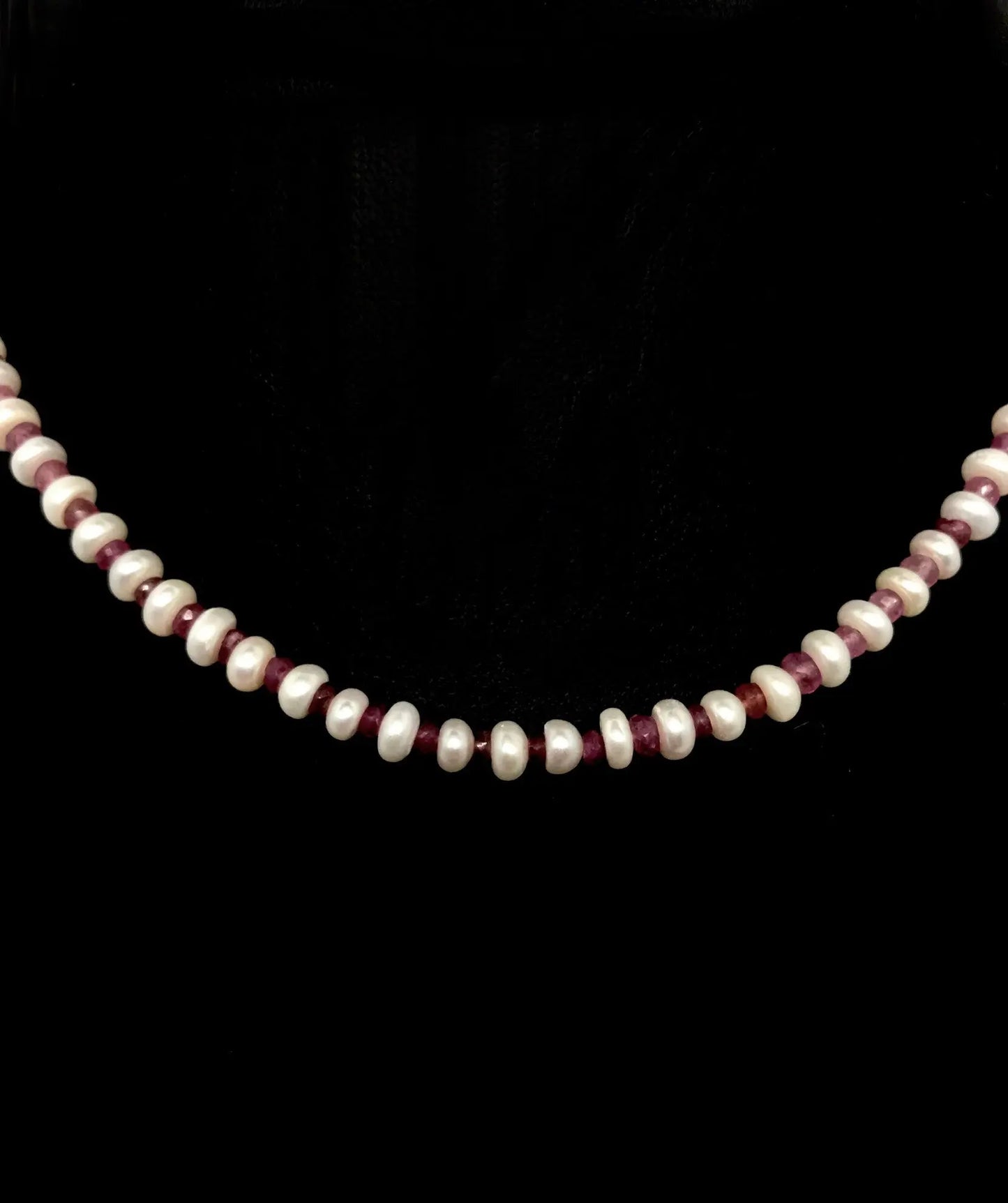Tarazed Gems & Jewellery
Pearl, Ruby and Pink Sapphire 16" Necklace
Pearl, Ruby and Pink Sapphire 16" Necklace
Couldn't load pickup availability
Pearl, Ruby and Pink Sapphire 16" Necklace
Mineral: Freshwater Pearl (Cultured) and Corundum (Pink Sapphire and Ruby)
Origin: Pink Sapphire and Ruby (India) and Cultured Pearl (Yiwu, Central Zhejiang Province, East China.)
Color: White, Red and Pink
Treatment: None Known (Possibly Heat Treatment)
Material: Sterling Silver (925)
Size: 41cm (16.1")
Width: 5mm
Clasp: Spring Clasp
Weight: 14g
10% of this purchase will be donated to The Wildlife Protection Society of India (WPSI)
Traditionally, sapphire symbolizes nobility, truth, sincerity, and faithfulness. It has decorated the robes of royalty and clergy members for centuries. Its extraordinary color is the standard against which other blue gems—from topaz to tanzanite—are measured.
In ancient Greece and Rome, kings and queens were convinced that blue sapphires protected their owners from envy and harm. During the Middle Ages, the clergy wore blue sapphires to symbolize Heaven, and ordinary folks thought the gem attracted heavenly blessings. In other times and places, people instilled sapphires with the power to guard chastity, make peace between enemies, influence spirits, and reveal the secrets of oracles.
In folklore, history, art, and consumer awareness, sapphire has always been associated with the color blue. Its name comes from the Greek word sappheiros, which probably referred to lapis lazuli. Most jewelry customers think all sapphires are blue, and when gem and jewelry professionals use the word “sapphire” alone, they normally mean “blue sapphire.”
Pearls have been coveted by people as symbols of wealth and status for thousands of years. A Chinese historian recorded the oldest written mention of natural pearls in 2206 BC.
As the centuries progressed toward modern times, desire for natural pearls remained strong. Members of royal families as well as wealthy citizens in Asia, Europe, and elsewhere treasured natural pearls and passed them from generation to generation.
The spherical shape of some pearls led many cultures to associate this gem with the moon. In ancient China, pearls were believed to guarantee protection from fire and fire-breathing dragons. In Europe, they symbolized modesty, chastity, and purity.
Color may vary in images and videos due to different lightings and angles.
Share






